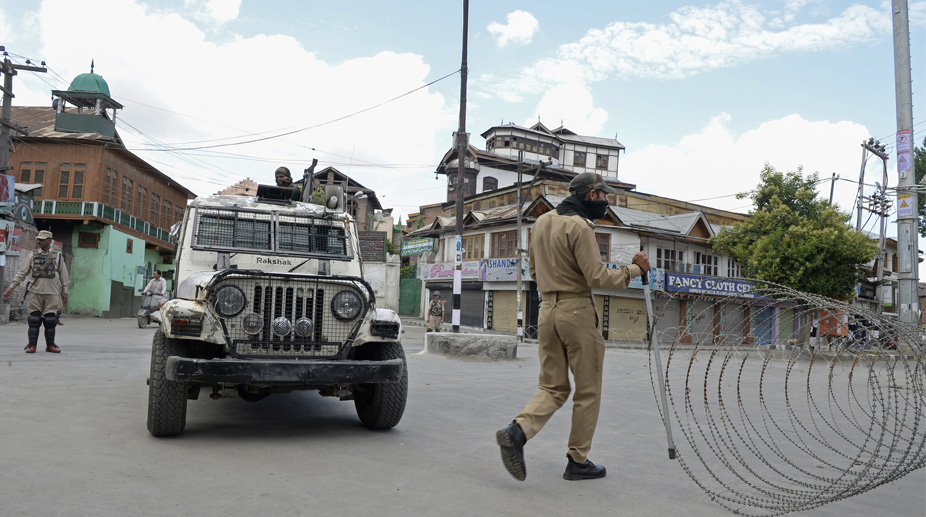For the people of Meghalaya, it is sometimes easy to think that we have come a long way since 1979 and have left the past behind but the wounds of those years don’t heal easily, especially for those who bore the brunt of the ethnic conflict. Meghalaya went into a tailspin in 1979 when, during Durga Puja, someone allegedly threw a stone at the goddess in one of the pandals in Shillong — now and even then, a cosmopolitan hub, which prided itself on its pluralistic culture.
The communal conflict carried on right through 1987 and it was only after 1992 that things calmed down somewhat. But the angst remained hidden and took the form of a virulent form of militancy when the Hynniewtrep National Liberation Council and its Garo version, the ANVC, began to raise their ugly heads. People were shot in broad daylight for not complying with extortion notes. That was a dark era in Meghalaya’s history and it continues to rankle.
Advertisement
In 1979, the Hindu Bengalis, who had settled in Shillong during the British era and after their persecution post the creation of Bangladesh in 1971, were the targets. They were accused of encroaching on the rights of tribals and of taking away their jobs. In 1982, the Nepalese became the next targets and also the Biharis. Meghalaya had gone off the tourism circuit then.
It was only after 2001 when militancy in the Khasi Hills was curtailed that tourism began to take shape and now it is a booming business. But ethnocentrism is not an easy thing to heal. It only exacerbates with the growth of a constituency of young people, who with their half-baked understanding of issues, which are neither black nor white, turn things into a binary and get into arguments or provoke their peers to do battle at the drop of a hat.
That is what happened in Shillong on the morning of 31 May when an altercation between two groups — one tribal, the other non-tribal, escalated into a major law and order problem requiring parts of the city be brought under curfew.
So the genesis of the trouble was that two Sikh girls were reportedly going to fetch water but had problems entering the water dispensing place because a bus was parked there. The girls asked the young teenaged sons of the driver (who was having tea at a shop) to remove the bus. The boys said they could not drive but the girls accused them of eve-teasing (it’s now the girls’ words against the boys).
After that, the girls reported the matter to their elders who appeared on the scene and beat up the two boys. One of them was taken to Civil Hospital and received stitches on his head. This happened in the morning and police arrived at the place but did not arrest anyone then. Perhaps they felt that the case was not serious enough to require an arrest.
Meanwhile, in the evening, a huge crowd marched towards Punjabi lane (a ghetto in the marketplace) and wanted to attack the Mazhabi Sikhs. Some television news channel did a live-streaming of the incident where people pelted stones at police and hate messages kept pouring in on social media.
It took a lot of restraint on the part of the police to handle the situation the way they did. Tear gas was fired and the crowd dispersed. Thankfully no one was injured.
But the situation is now tense and considering that the main marketplace is under curfew, it is going to harm the economic interests of the poorest. Of course, any such incident that results in a curfew will also deter tourists from coming in. Guess who will suffer the most in that case? The answer is all those in the rural outback who are now well-versed in monetising the sights and sounds of Meghalaya and earning an honest livelihood.
The problem with tribal-majority states is that if two tribals slug it out, things are taken as par for the course but the moment the clash/quarrel is between a tribal and non-tribal, then all hell breaks loose. Even newspapers are expected to take sides. Social media has only allowed the unthinking to spew venom and aggravate the situation. Indeed the Internet is a double-edged sword.
But let’s understand the genesis of the situation. A particular ghetto called Punjabi Lane is peopled by the Mazhabi Sikhs whose parents and grandparents were brought to Shillong during the days of dry latrines. They had to literally carry the faeces-filled tins from tribal homes and dump them in rivers, streams and drains. This went on until the 1970s when people were compelled to construct sanitary toilets.
But the Mazhabi Sikhs had already settled in Shillong and begun to consider the place their home. Their children and grandchildren have become hawkers or picked up small jobs. An erstwhile residential area where they were allowed to live in is now a full-fledged commercial hub and in order to survive, the Sikhs have converted whatever space they can get hold of into tiny shops perhaps by paying off officials in the municipality.
Attempts to shift the Mazhabi Sikhs from that congested ghetto to another more spacious part of the city, where homes have been constructed for them, have met with repeated resistance. They have now got a stay order from the Supreme Court and the Government has not appealed against it. Also the Mazhabi Sikhs from a formidable vote bank and politicians normally don’t want to ruffle their feathers.
Another group of them in another part of the city to have been resisting relocation even though the place they reside in has become terribly congested. These are populations that live in perpetual insecurity and who derive their bravado out of being together as a group and communalising their cause. They fight back when in a corner because they have nothing else to lose.
The tribes, on the other hand, feel they are being cornered by “outsiders” who have no business being there in the first place. The idea of an ethnic homeland to be inhabited by indigenous people only, where all outsiders are seen as interlopers, is a stark reality and no amount of social engineerings — such as explaining that in India, a citizen is free to settle anywhere in the country — works. People take hardened positions but politicians are the last ones to take a pragmatic stand and speak out from a non-partisan position.
We live our lives in this quagmire never knowing when the communal cauldron will be set ablaze and claim its victims all over again. Lives were lost in 1979, 1982 and 1987 but those were non-tribal lives and hence considered dispensable. No arrests are ever made and no one convicted for heinous crimes.
Just a few years ago when some groups started a movement demanding the Inner Line Permit, ostensibly to safeguard tribals from the non-tribals, at least two shop owners were burnt alive but no one was arrested. You wonder what the purpose of the police and the law is and whether they will ever be held accountable for non-performance of duties.
The police force is largely compromised too since a tribal policeman will find it difficult to arrest his kith and kin. This is where the central reserve police force or a rapid action force would have saved the situation. Alas! Our plight is to simply write and carry on. After all, the Citizens’ Charter that we should be having is not even on our radar. We are not aware of our rights as citizens.
As journalists, it is even more difficult to fulfil our duties and express our views freely and fearlessly. We are under constant attack by one or the other group and our lives are on the line. But then who really cares about the fourth estate?
The writer is Editor of the Shillong Times and can be contacted at patricia.mukhim@gmail.com











